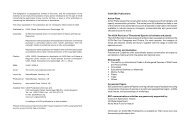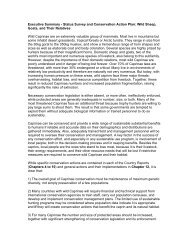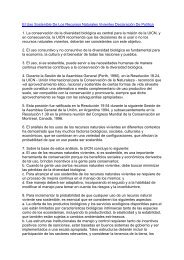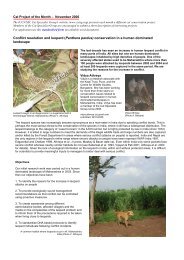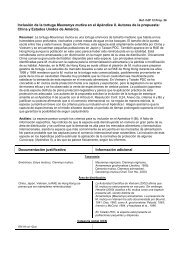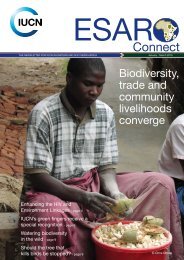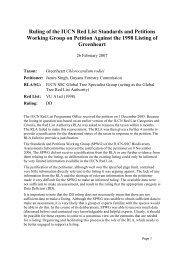Planning education to care for the earth - IUCN Knowledge Network
Planning education to care for the earth - IUCN Knowledge Network
Planning education to care for the earth - IUCN Knowledge Network
Create successful ePaper yourself
Turn your PDF publications into a flip-book with our unique Google optimized e-Paper software.
Addressing urban issues through environmental<strong>education</strong> in IndiaShyamala KrishnaAbstractA communication strategy <strong>for</strong> an integrated management plan <strong>to</strong>relieve <strong>the</strong> problem of garbage disposal in <strong>the</strong> City of Bangalore hasbeen implemented by India’s Centre <strong>for</strong> Environment Education,Sou<strong>the</strong>rn Regional Cell (CEE South). In this and o<strong>the</strong>r urbanenvironment projects, CEE South aims <strong>to</strong> bring people <strong>to</strong>ge<strong>the</strong>r <strong>to</strong>make <strong>the</strong>m aware of social and infrastructure problems and <strong>the</strong>methods by which some of <strong>the</strong>se problems can be addressed.Communication and <strong>education</strong> programmes are designed <strong>to</strong>encourage participation among citizens. It has been found that peoplecan be moved in<strong>to</strong> action only through personal contact anddemonstration of solutions <strong>to</strong> problems.IntroductionThe metropolitan areas of India <strong>to</strong>day are bursting at <strong>the</strong> seams. Cityinfrastructures are under stress <strong>to</strong> <strong>the</strong> point where problems of environmentaldegradation - primarily garbage, sanitation, air and noise pollution, poorhealth and housing facilities, industrial pollution and congestion - seeminsurmountable.The growth of Indian cities is attributed <strong>to</strong> both <strong>to</strong> migration from rural areasand <strong>to</strong> an increase in urban population due <strong>to</strong> better health <strong>care</strong>. Countrydwellers who migrate <strong>to</strong> <strong>the</strong> cities are in reality “ecological refugees” whocan no longer support <strong>the</strong>mselves in <strong>the</strong> highly degraded and vulnerable ruralenvironment. They opt <strong>for</strong> <strong>the</strong> inhuman conditions which await <strong>the</strong>m inurban slums where jobs, health facilities and <strong>education</strong> are relatively moreaccessible.However, some 70-80 percent of <strong>the</strong> urban population are rich or belong <strong>to</strong><strong>the</strong> middle class, and have a much higher rate of consumption of resourcessuch as water, electricity, fuel and o<strong>the</strong>r commodities than <strong>the</strong> poor.There<strong>for</strong>e, <strong>the</strong> poor have little access <strong>to</strong> <strong>the</strong>se resources and o<strong>the</strong>rs includinghousing, <strong>education</strong>al institutions and transport. This problem is fur<strong>the</strong>raccentuated by <strong>the</strong> fact that <strong>the</strong>re is a lack of infrastructure in <strong>the</strong> slums andsettlements where <strong>the</strong>y live.The advantages of city dwelling have been offset by a decline in <strong>the</strong> sense ofsolidarity in time of need and a group or community approach <strong>to</strong> common57



